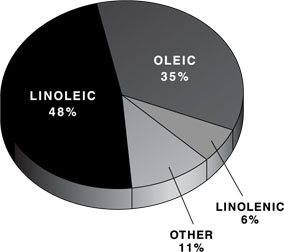
The Legume that Conquered the World
Soybeans belong to the pea family (Leguminosae) and are among the first crops cultivated by humans. Since the 11th century B.C., they have been grown in China, where they were the most important crop. They made their way to Japan in the 7th century, to Europe in the 17th century, and to the United States in 1804. Today, soybeans are everywhere. They are the world’s leading legume crop, with more than 100 million metric tons produced annually.
Soy Foods Are Growing in Popularity
Soybeans have a bright future in the global kitchen. They are currently processed for consumption as oil in margarines, shortenings, and salad dressings, and as protein in tofu, miso, tempeh, soy milk, meat extenders, and meat replacements (for example, bacon-like bits, simulated sausages, etc.). As the nutritional and health benefits of soybeans become better known, soybeans are sure to become dietary superstars. But for now, think of them as undiscovered actors whose time will soon come in the theatre of global nutrition.
Soybeans Pack a Lot of Nutritional Value
Important Unsaturated Fatty Acids in Soybean Oil

Soybeans are 13-25% oil, 30-50% protein, and 14-24% carbohydrate. They are an excellent source of essential fatty acids (those which are not produced by the body and therefore must be consumed in the diet). Good sources of complementary protein when consumed with cereal grains, soybean products are comparable to milk, a high-quality protein, in essential amino acids. “When well-processed soy products serve as the major or sole source of protein intake, their protein value approaches or equals that of foods of animal origin, and they are fully capable of meeting the long-term essential amino acid and protein needs of children and adults,” say V.R. Young and N.S. Scrimshaw of the Massachusetts Institute of Technology’s Clinical Research Center and Department of Nutrition and Food Science.